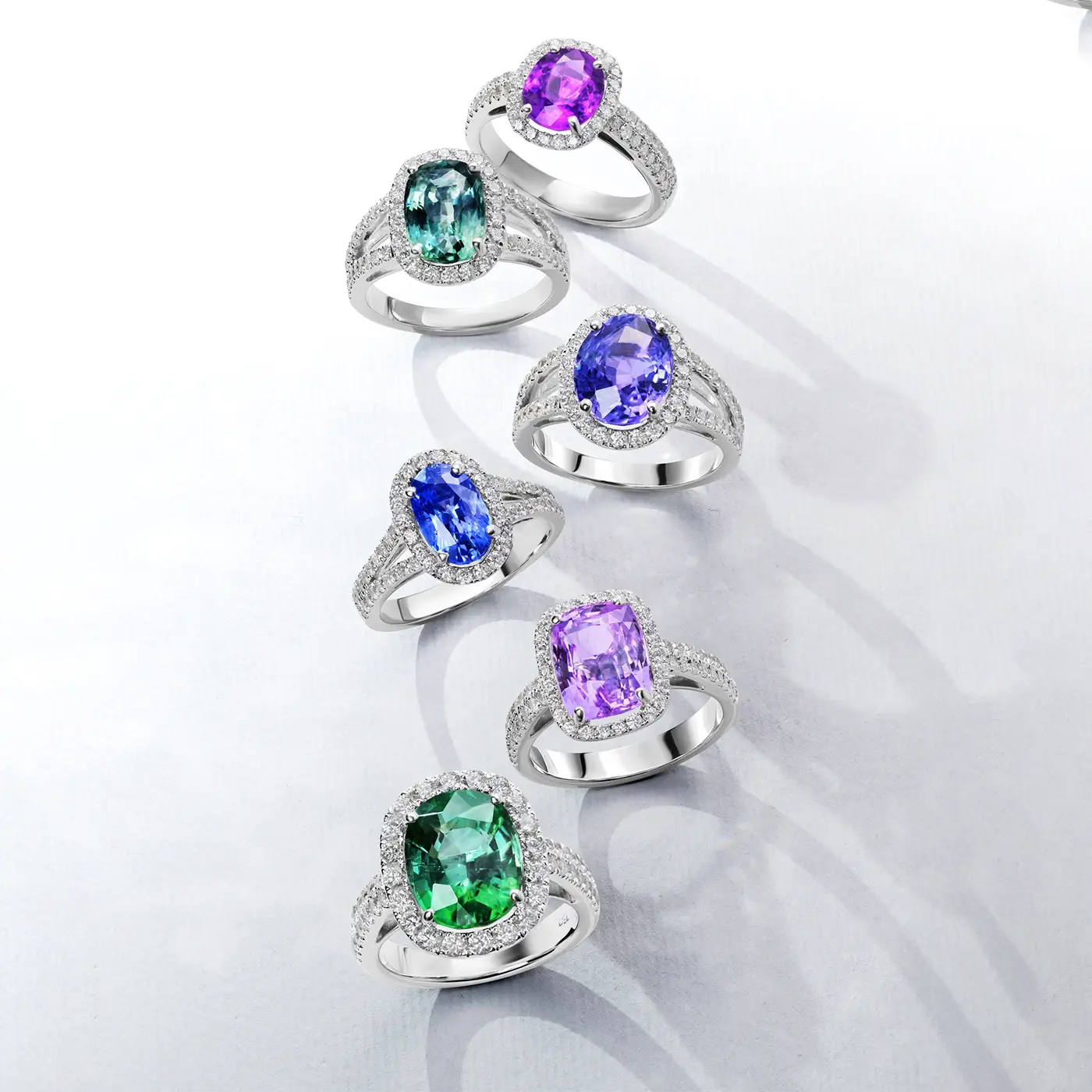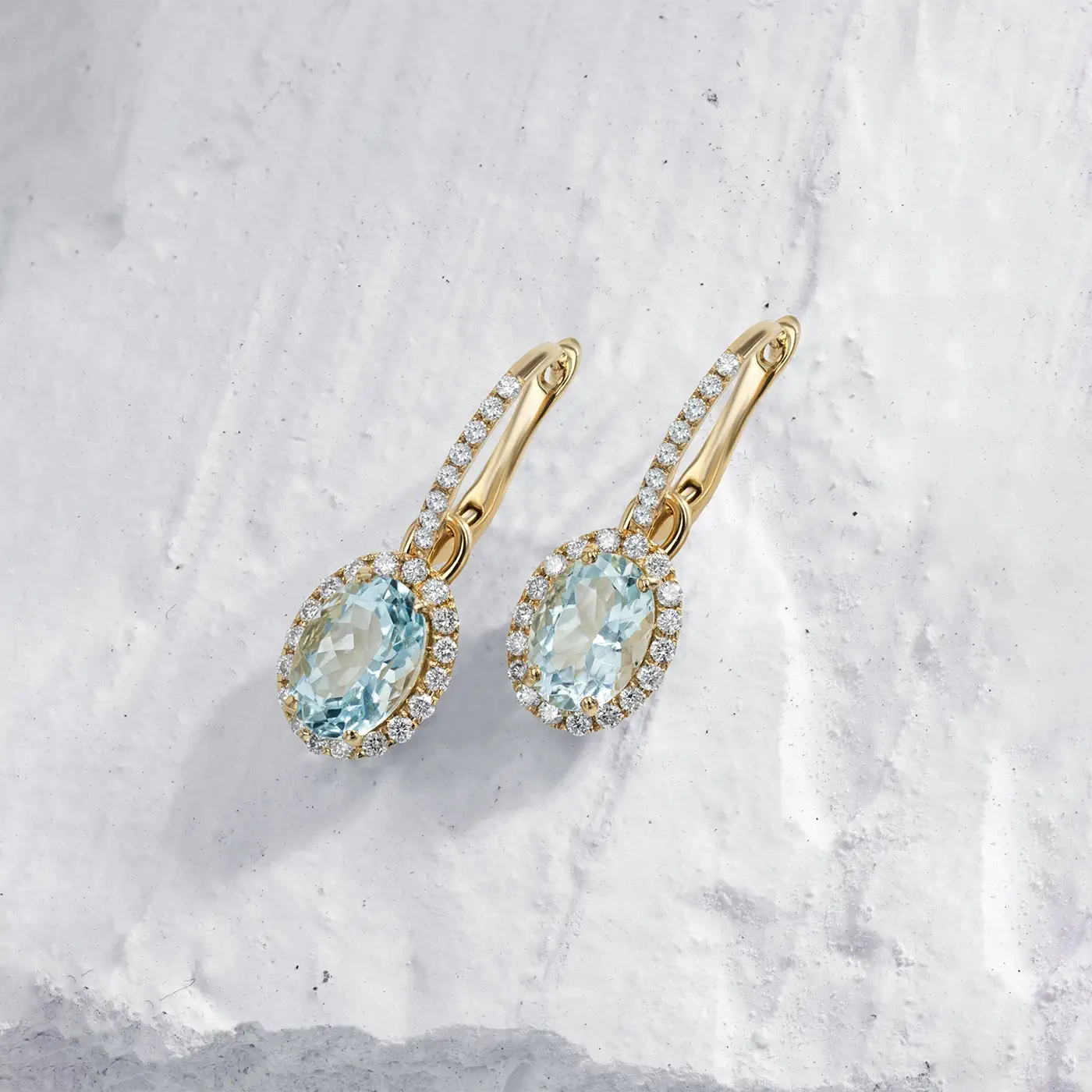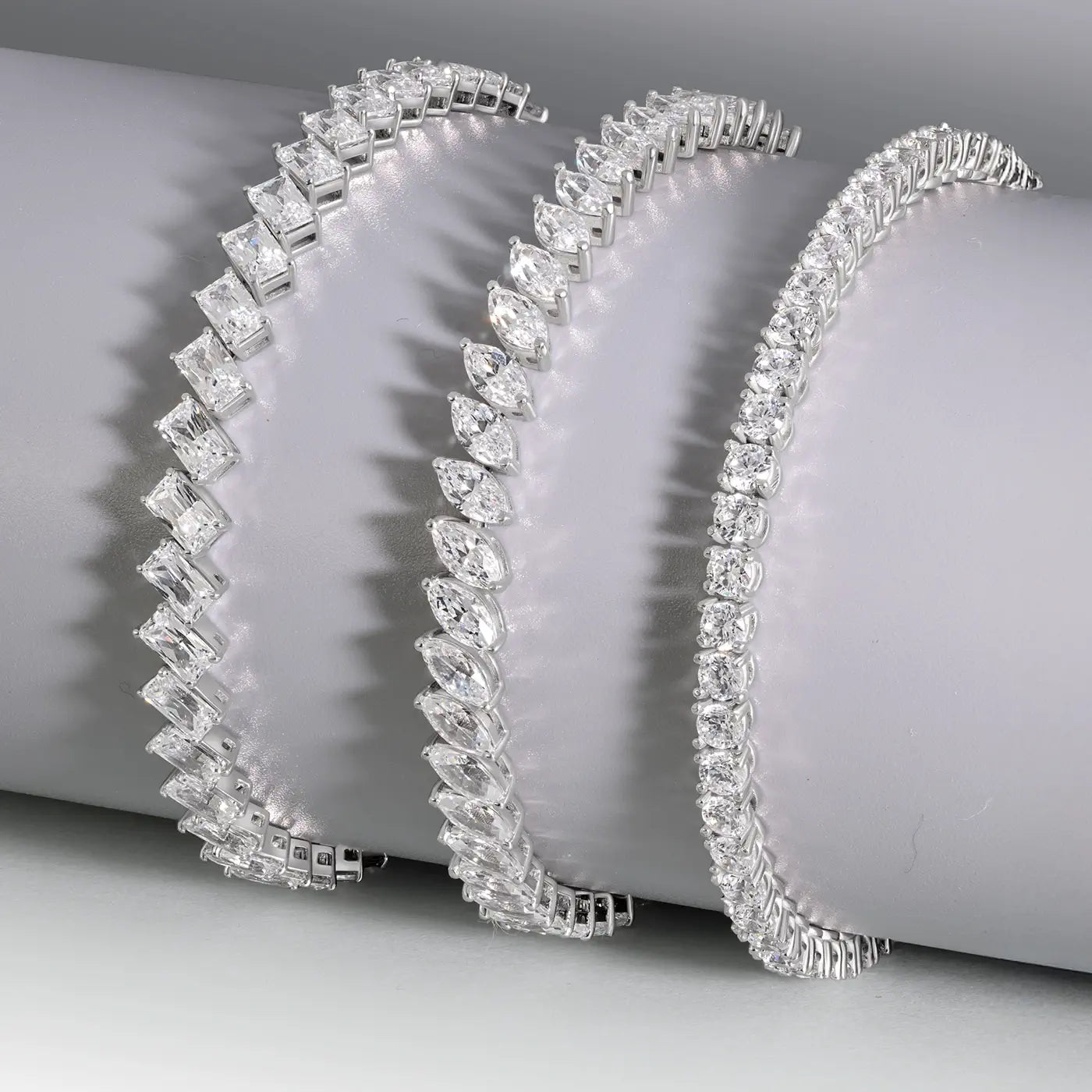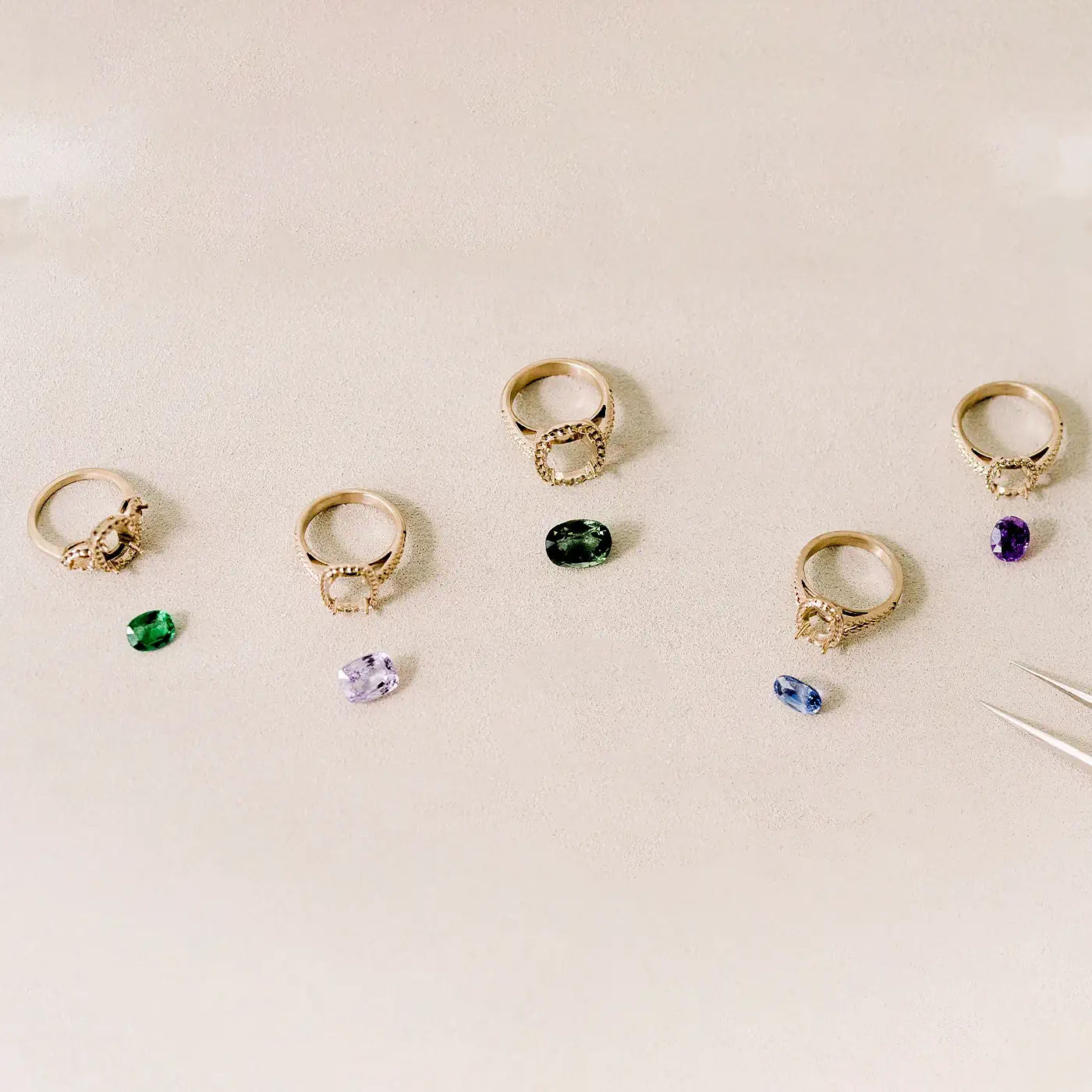ENCYCLOPEDIA
Green Tourmaline Full Guide
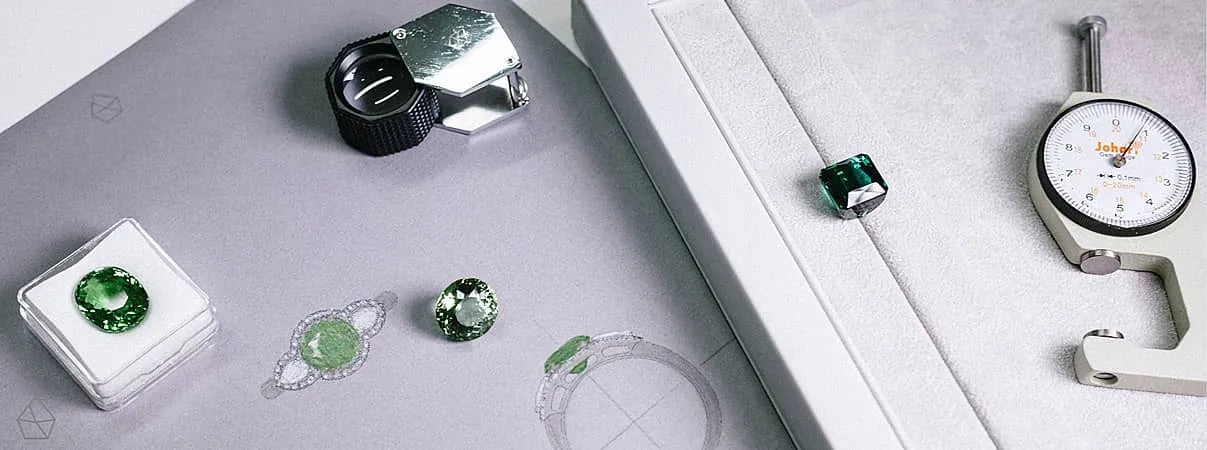
Characteristics of the Green Tourmaline
Etymology: The name is derived from the Sinhalese name "turamali", meaning "stones with mixed colors".
Family: Tourmaline
Chemical Composition: Boron Silicate, with iron and sometimes chromium or vanadium contributing to the green coloration.
Hardness: 7 - 7.5 on the Mohs scale
Density: 2.82 to 3.32 depending on its chemical composition
Optical Properties: Strong pleochroism, presenting different shades of green when viewed from various angles.
Refractive Index: 1.616 - 1.666
Birefringence: 0.014 - 0.024
Crystal System: Hexagonal
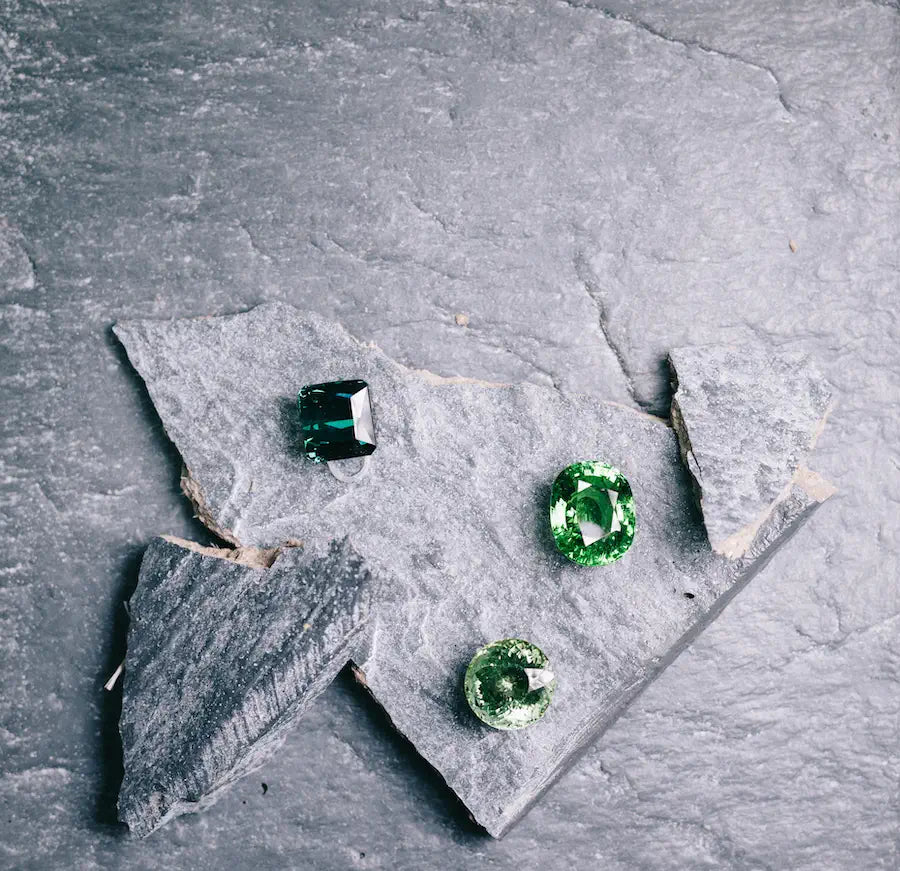
The origin of Green Tourmalines
Green tourmalines are sourced from various locations around the globe, with significant deposits found in Brazil, Africa (notably in Mozambique, and Nigeria), Afghanistan, and Pakistan. These gemstones form in pegmatites and metamorphic rocks, where mineral-rich fluids allow boron silicates to crystallize, incorporating trace elements like iron, which contribute to the green coloration.
Carat
The carat is the standard unit of measurement for the weight of gemstones. One carat is equal to 200 milligrams.
The carat is not to be mistaken for karat, which is the standard unit for gold purity.
Tourmalines can be found in large crystals, allowing lapidaries to cut larger stones for the jewelry market.
The color of the Green Tourmaline
The color of green tourmaline ranges from light, minty greens to deep, forest greens. The hue is influenced by trace elements within the crystal, primarily iron, and sometimes chromium or vanadium for the more vivid green shades. The most valued green tourmalines display a rich, saturated color without too much yellow or brown tint. Some green tourmalines, known as chrome tourmalines, are particularly prized for their intense, emerald-like green color, which is due to chromium content.
The variation in green hues, combined with the stone's clarity and cut, contributes to the beauty and uniqueness of each green tourmaline.
Discover our Guide on the Colors of Gemstones.
The clarity of Green Tourmalines
Unlike tourmalines of other colors, green tourmalines are generally free of eye-visible inclusions, we call that "eye-clean".
As the tourmalines grow in liquid-rich environments, their inclusions will often be filled with liquid or gas, running parallel to the length of the crystal.
Cut & Shapes
Green tourmalines are expertly cut into various shapes and styles, such as faceted rounds, ovals, and emerald cuts, or smooth cabochons, to accentuate their natural color, clarity, and brilliance.
Due to the strong pleochroism of green tourmalines, the cut and shape are crucial for their value, because they directly influence the gemstone's overall appearance, light performance, and color intensity. A well-executed cut can significantly enhance the stone's visual appeal by maximizing light reflection and making the color appear more vibrant, while a poorly cut tourmaline might look dull or have its color diminished.
Custom cuts and unique shapes can also add to a green tourmaline's value by showcasing its unique features or by creatively utilizing the rough to preserve weight and highlight the gemstone's best qualities, making each piece distinct and potentially more desirable to collectors and enthusiasts.
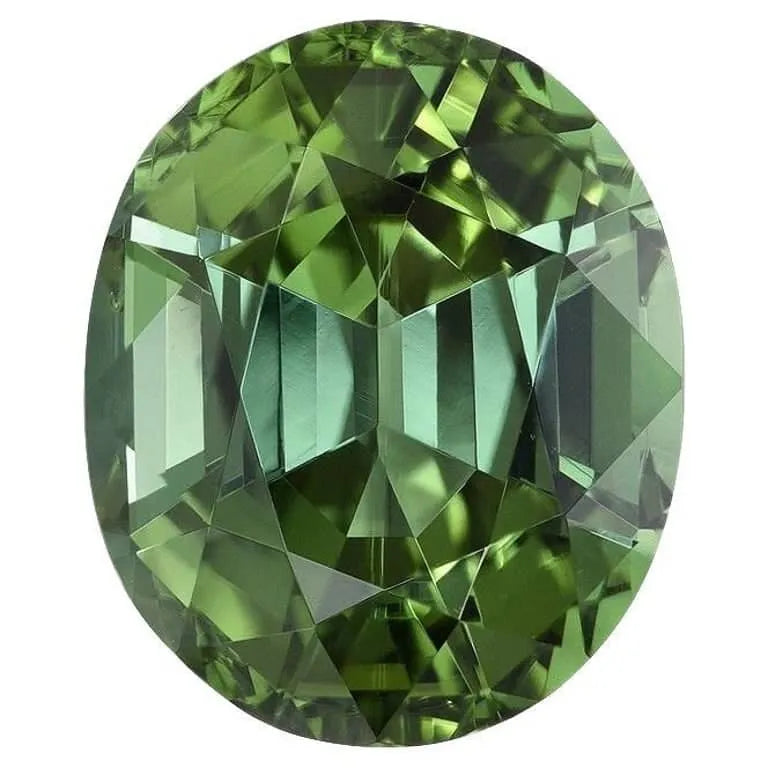
Oval Shape Green Tourmaline
Round Shape Green Tourmaline
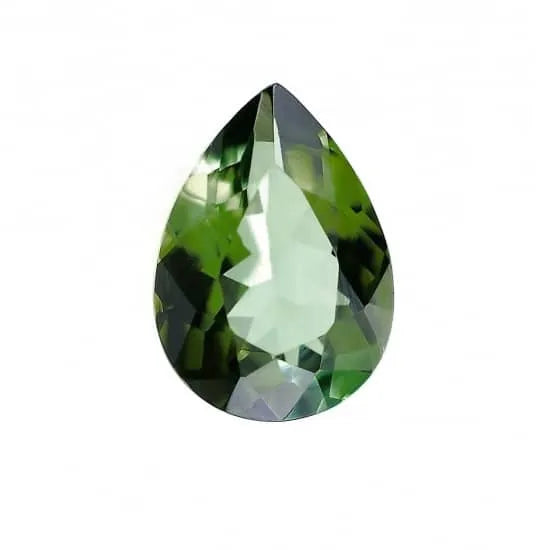
Pear Shape Green Tourmaline

Cushion Cut Green Tourmaline
Birthstone & Wedding Anniversary
The green tourmaline, along its sister colors and the opal, is one of the birthstone of October.
The green tourmaline is used to celebrate the 8th wedding anniversary in the U.S. and the 52nd in France.
Discover our Birthstone Full Guide.
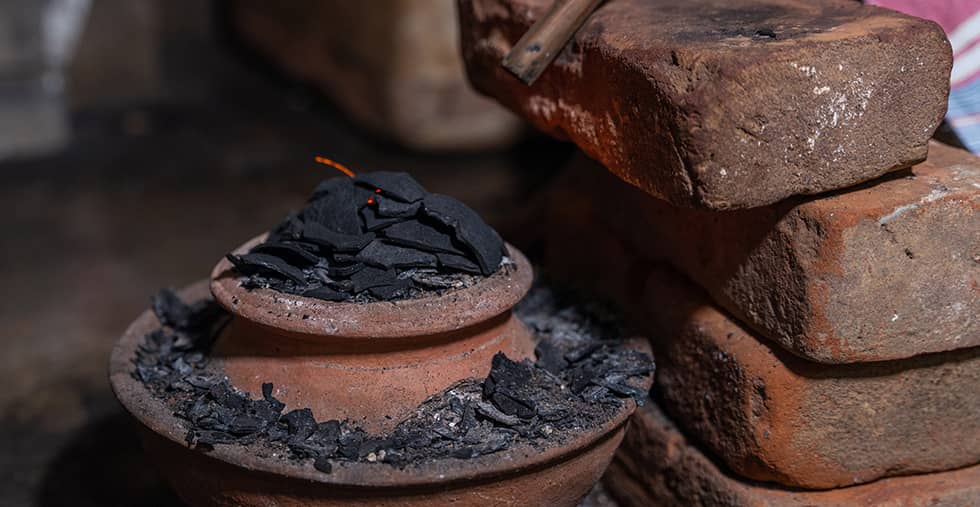
Treatment
Green tourmalines, and tourmalines in general, are not going through any treatment.
However, they might in rare occurrences be subject to heat treatment. The heat can lighten the tone of green tourmalines, but the deep tones are usually what customers look for in green tourmalines.

